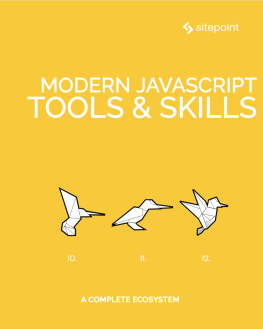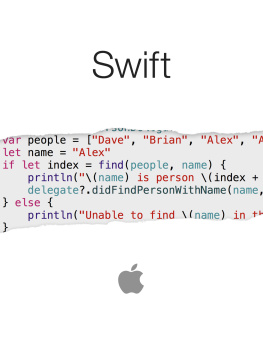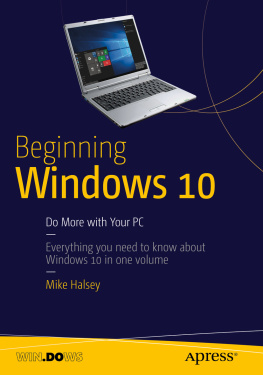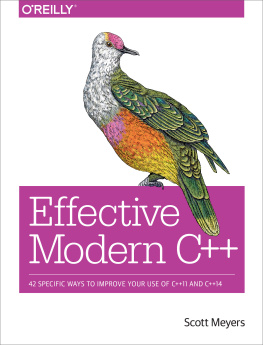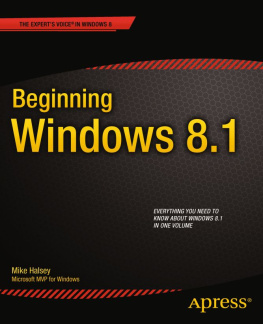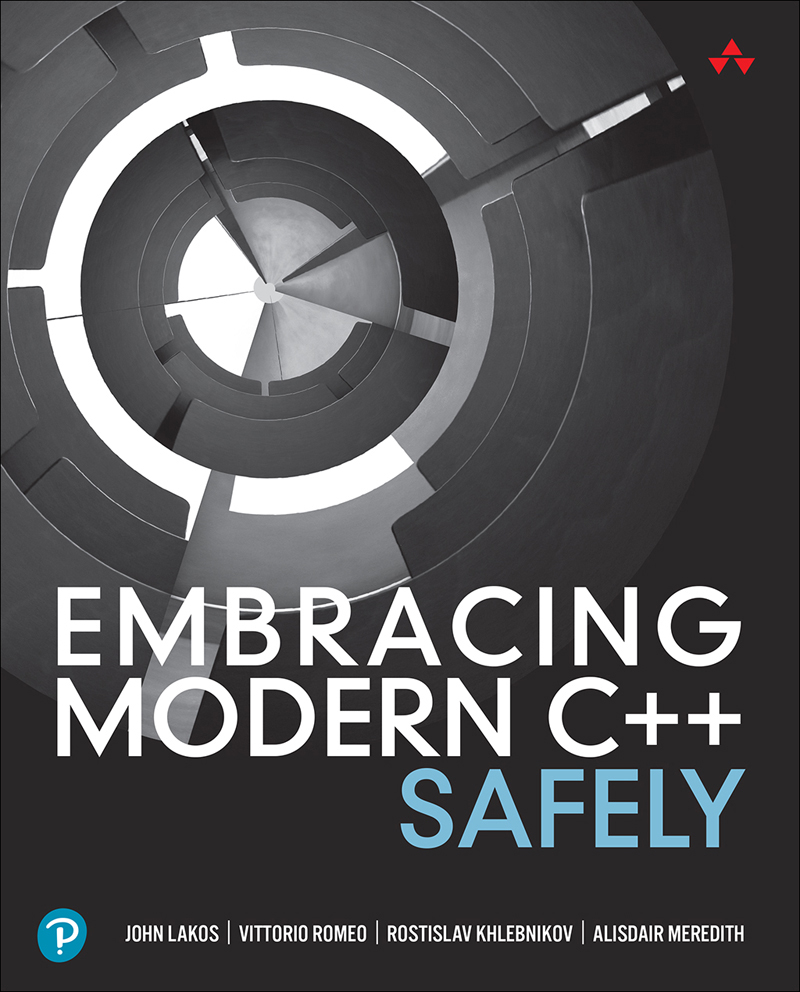ePUB is an open, industry-standard format for eBooks. However, support of ePUB and its many features varies across reading devices and applications. Use your device or app settings to customize the presentation to your liking. Settings that you can customize often include font, font size, single or double column, landscape or portrait mode, and figures that you can click or tap to enlarge. For additional information about the settings and features on your reading device or app, visit the device manufacturers Web site.
Many titles include programming code or configuration examples. To optimize the presentation of these elements, view the eBook in single-column, landscape mode and adjust the font size to the smallest setting. In addition to presenting code and configurations in the reflowable text format, we have included images of the code that mimic the presentation found in the print book; therefore, where the reflowable format may compromise the presentation of the code listing, you will see a Click here to view code image link. Click the link to view the print-fidelity code image. To return to the previous page viewed, click the Back button on your device or app.
Embracing Modern C++ Safely
John Lakos
Vittorio Romeo
Rostislav Khlebnikov
Alisdair Meredith

Boston Columbus New York San Francisco Amsterdam Cape Town
Dubai London Madrid Milan Munich Paris Montreal Toronto Delhi Mexico City
So Paulo Sydney Hong Kong Seoul Singapore Taipei Tokyo
Cover image: Unconventional/Shutterstock
Pages 109, 130: cocktail glass, Laura Humpfer/OpenMojis
Many of the designations used by manufacturers and sellers to distinguish their products are claimed as trademarks. Where those designations appear in this book, and the publisher was aware of a trademark claim, the designations have been printed with initial capital letters or in all capitals.
The authors and publisher have taken care in the preparation of this book, but make no expressed or implied warranty of any kind and assume no responsibility for errors or omissions. No liability is assumed for incidental or consequential damages in connection with or arising out of the use of the information or programs contained herein.
For information about buying this title in bulk quantities, or for special sales opportunities (which may include electronic versions; custom cover designs; and content particular to your business, training goals, marketing focus, or branding interests), please contact our corporate sales department at or (800) 382-3419.
For government sales inquiries, please contact .
For questions about sales outside the U.S., please contact .
Visit us on the Web: informit.com/aw
Library of Congress Control Number: 2021947542
Copyright 2022 Pearson Education, Inc.
All rights reserved. This publication is protected by copyright, and permission must be obtained from the publisher prior to any prohibited reproduction, storage in a retrieval system, or transmission in any form or by any means, electronic, mechanical, photocopying, recording, or likewise. For information regarding permissions, request forms and the appropriate contacts within the Pearson Education Global Rights & Permissions Department, please visit www.pearson.com/permissions.
ISBN-13: 978-0-13-738035-0
ISBN-10: 0-13-738035-6
ScoutAutomatedPrintCode
Pearsons Commitment to Diversity, Equity, and Inclusion
Pearson is dedicated to creating bias-free content that reflects the diversity of all learners. We embrace the many dimensions of diversity, including but not limited to race, ethnicity, gender, socioeconomic status, ability, age, sexual orientation, and religious or political beliefs.
Education is a powerful force for equity and change in our world. It has the potential to deliver opportunities that improve lives and enable economic mobility. As we work with authors to create content for every product and service, we acknowledge our responsibility to demonstrate inclusivity and incorporate diverse scholarship so that everyone can achieve their potential through learning. As the worlds leading learning company, we have a duty to help drive change and live up to our purpose to help more people create a better life for themselves and to create a better world.
Our ambition is to purposefully contribute to a world where:
Everyone has an equitable and lifelong opportunity to succeed through learning.
Our educational products and services are inclusive and represent the rich diversity of learners.
Our educational content accurately reflects the histories and experiences of the learners we serve.
Our educational content prompts deeper discussions with learners and motivates them to expand their own learning (and worldview).
While we work hard to present unbiased content, we want to hear from you about any concerns or needs with this Pearson product so that we can investigate and address them.
To my darling wife, Elyse, who I love dearly, always have, and forever will:
When I use a word, Humpty Dumpty said in rather a scornful tone,
it means just what I choose it to meanneither more nor less.
Lewis Carroll, Through the Looking-Glass
JSL
To my aunts and my dad,
who have always supported me
in every aspect of my life.
VR
To Elena and my parents.
RK
To the late David and Mary Meredith,
loving parents who encouraged me in everything that I did
and would have been so proud to see their son finally in print.
AM
Contents
Foreword by Shawn Edwards
I have been writing programs in C++ professionally for more than 25 years, even before it was standardized. The C++ language, in its mission to deliver zero overhead and maximum performance, necessarily provides few guardrails; syntax and type safety go only so far. Using C++ features in unsound ways and creating spectacular failures was always easy. But because the language was relatively stable, good developers over time learned how to write reliable C++ software.
The first standardized version, C++98, formalized what many already knew about the language. The second version of the Standard, C++03, included some small corrections and enhancements but did not fundamentally alter the way programs were written. What it meant to know how to program in C++, however, changed drastically with the publication of the C++11 Standard. For the first time in many years, the ISO C++ Standards Committee (WG21) added significant new functionality and removed functionality as well. For example, noexcept and std::unique_ptr were in, and the days of using dynamic exception specifications and std::auto_ptr were numbered.
At the same time, the Standards Committee announced its unprecedented commitment to deliver a new version of the C++ Standard every three years! For a large software organization, like Bloomberg, whose software asset lifetimes are measured in decades, relying on a language standard that is updated with such frequency is especially problematic. Bloomberg has been reliably and accurately providing indispensable information to the professional financial community for nearly 40 years, with services that span such diverse needs as financial analytics, trading solutions, and real-time market data.


